News and Announcements
Welcome to our hyperlocal news page! Check out news about happenings within our neighbourhoods and community here.
For full versions of these stories, and more, published in Living On The Hill, click here.
For membership forms to join BTRA and the BTRA Security Scheme, click here (BTRA Membership / BTRA Security Scheme).
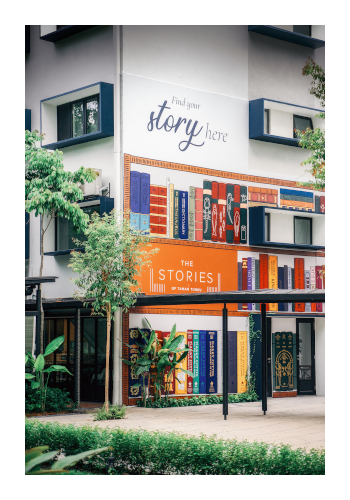
New Look, New Needs
Most people will agree that after 50 years, some buildings do need a makeover to stay relevant. It also makes good business sense to upgrade and improve facilities to retain loyal customers and attract new ones. With this in mind, Selangor Properties has mindfully planned extended covered walkways, preserving green social spaces within the development and recrafting the traffic flow within Taman Tunku to ease future traffic flow.
The refurbishment works will improve the façade, as well as optimise space of the retail lots, including outdoor dining areas, new terraces and walkway extensions. There will be an upgrade for the driveway, parking lots, and useable public space, as well as beautification of both hard and soft landscapes.
The outcome is that Taman Tunku will be more of a service and social centre, a place for people from near and further afield to get together, for business networking, and enjoy meals with family, friends and business associates.
Selangor Properties has decreed that there will be unique retail concepts that add value to community, as well as attract customers from beyond its front yard to dine there. Likewise, non-F&B outlets will also need to offer something different that meets the changing needs of the core community and its environs, which include other suburbs such as Damansara Heights, Mont Kiara and Taman Tun Dr Ismail.
A Walk down Memory lane
Long-time residents and visitors may remember Hock Lee's Mini Market, as well as a branch of Southern Bank Berhad, on the ground floor. The former changed hands and eventually gave way to an F&B provider, while Southern Bank was acquired by CIMB Bank in 2007.
Selangor Properties built the blocks - probably one of the first residential developments of its kind in Kuala Lumpur - in the 1960s. Despite its age, the units continued to attract and retain tenants over the years for many reasons, with some residential units making way for SOHO initiatives. Location is top notch as the area is still one corner of Kuala Lumpur that is green and relatively serene, surrounded by secondary jungle, and has easy access to the city centre.
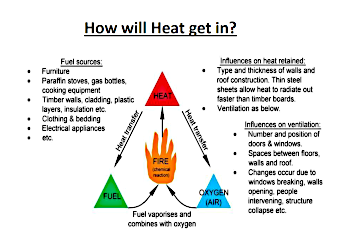
The demonstration and presentation were given by Flamoff (www.flamoff.net), a home-grown company that manufactures and markets fire-fighting solutions for home and workplace. These solutions are easy to use to extinguish small fires and create a path out, if trapped. The idea is to get away from the budding flames and call the Fire Services as quickly as possible.
YB Hannah Yeoh, who joined the Saturday event, said that when she first attended the talk during her stint at Subang Jaya, it changed the way she sleeps at home. Having some fire safety products in the bedroom and in strategic spots in the house provided a sense of security in the event of a fire outbreak.
According to Flamoff, the time it takes for a fire to reach its flashover point - the point at which it becomes out of control and all-consuming - has reduced over the years. One reason is that many items in the home are now made with synthetic materials and burn much faster - furniture, curtains or drapes, carpets, sofas, and beddings are some examples. Then there are things such as cooking oil, paint, thinner, alcohol, cosmetics and make-up, computers, and compressors - any number of everyday items we use.
Fires can reach flashover points in under five minutes, whereas it may take as long as 15 minutes for fire and rescue services to reach the premises.
These two timelines suggest a less than favourable outcome: if there isn't already an escape plan to deal with a home fire, waiting for local Fire and Rescue Services to arrive could be fatal.
So, what are the key things one can do to either prevent a fire or deal with a small-ish fire at home?
- Install smoke detectors in specific rooms; these are essential to buy time to get up and get out;
- Ensure distribution boxes are well maintained and wall electrical points are not overloaded with multiple extension cords;
- Have a fire escape plan for the home (detached house and condominiums) that includes fire-retardant protective covering for residents and a route out;
- For those living in condos, know where the fire exits are and make sure they aren't blocked;
- Don't leave items that can actually cause a fire unattended or out of sight, e.g. scented candles, incense sticks or tea light candles
On whether keeping a fire extinguisher at home is useful: the short answer is "it depends". Ask yourself: is my fire extinguisher in good working condition? When did I last get it checked? Where is it? Is it easy to get to? Do I remember how to use it? Who else knows how to use it?
One might want to consider other quick fire-fighting options for fires still in Stages 1 and 2.
It would be an unspeakable tragedy if disaster struck and inflicted material damage as well as loss of life. A fire at home would be one such disaster. Fortunately, there are ways that help to prevent a fire from happening, or make a quick escape if one has already started but has not reached its flashover point.
It pays to take basic fire prevention measures to minimise the risk to ourselves, our family, pets, domestic workers, and our homes.
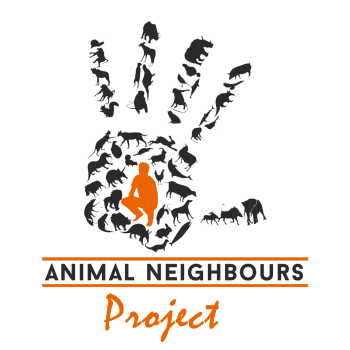
The urban human-monkey conflict is not new. The Department of Wildlife and National Parks (Perhilitan) reports that more than 60 percent of wildlife complaints are about monkeys. It is well acknowledged that human encroachment, monkey feeding, poor animal tourism management, and rapid urban development have forced monkeys to adapt to urban environments - being closer to humans than ever before.
In June 2019, Animal Neighbours Project (ANP), a project aimed at helping communities manage urban wildlife conflict, held a community workshop - "Human-Monkey Conflict in Urban Areas" - with BTRA at Taman Tugu Nursery. Perlihatan and DBKL representatives also attended the session.
A survey was proposed for residents of Bukit Tunku and Taman Duta. The purpose is to better understand key issues faced by residents with regard to the perennial human-monkey conflict. The feedback would further enable understanding as to what residents feel about monkeys in the area so that mitigation strategies proposed would meet realistic expectations.
It is hoped that information and data on monkey sightings (including time and size of the troop), issues caused by human monkey conflict, residents' own initiatives and perspectives towards reducing conflict, can be collected and analysed for effective next steps.
Through this Human-Monkey Relationship survey, ANP and BTRA aim to understand the magnitude of the human-monkey conflict in Bukit Tunku and Taman Duta, with a view to developing practical and feasible strategies that can be implemented in the area. The long-term aim of the project is to achieve better human-monkey welfare in urban settings and promote sustainable community awareness, while reducing such practices as monkey trapping and culling.
About Animal Neighbours Project
ANP is a community project that aims to reduce human-monkey conflict using research and awareness. The project was established and founded in 2013 by Dr Sharmini Paramasivam, Universiti Putra Malaysia (UPM) alumni from the Faculty of Veterinary Medicine. Dr Sharmini is currently based at the School of Veterinary Medicine, University of Surrey in the United Kingdom.
In 2018, the ANP won a Global Challenges Research Fund grant from Research England in collaboration with Universiti Putra Malaysia. The GCRF project aims to develop a multi-disciplinary stakeholder partnership to address the human-monkey conflict in Selangor and Kuala Lumpur.
To date, ANP has engaged with local communities in urban areas that are directly affected by the human-monkey conflict, among them Bangi, Bukit Gasing, Bukit Kiara, Bukit Jalil, Taman Tugu, Bukit Tunku, and Kuala Selangor, to assess the severity of the problem.
The project continues to expand and engage with more communities in Malaysia. ANP is actively looking for volunteers who are interested to participate and support this cause. Contact ANP at animalneighbours@gmail.com or send a message on its Facebook page.
Animal Neighbours Project
Facebook: https://www.facebook.com/animalneighbours/
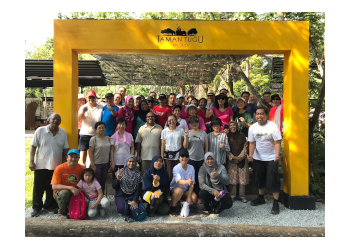
On Saturday 4th May, between 30 and 40 BTRA members attended a morning talk and walk in Taman Tugu. They saw first-hand the extensive effort and investment that Khazanah has contributed to convert this former residential enclave into a formidable urban green space, with its trails, indigenous trees, walkways, nursery, surau and Hindu temple.
Led by BTRA President Dato' Muthanna Abdullah, the BTRA group received a briefing about the Taman Tugu Project, with emphasis on conservation and preservation of the urban forest.
"Green spaces in our city seem to be under constant threat of development, so it was especially gratifying to know that Taman Tugu urban forest is just a stone's throw from the Hill," said Dato' Muthanna.
"Residents of the Hill had an opportunity to see how this historical corner of KL has been transformed into a valuable environmental asset for those who want a bit of a walk among lush greenery or simply find some refuge from the city's concrete jungle," he added.
The trails of Taman Tugu vary in distance, from 1.6km to 5km, including easy trails for seniors. During the pre-walk briefing, participants were informed that plastic items, such as water bottles or food containers, are not allowed in the park. Furthermore, there are no dustbins along the trails, which means that visitors must take their trash with them when they leave.
BTRA was motivated to serve as Community Partner for the 4th May walk to introduce residents of Bukit Tunku and Taman Duta to Taman Tugu in a group outing
"Taman Tugu is not far from our neighbourhoods, and is easily accessible with convenient parking facilities. As the Community Partner for this event, we could do something as a group, similar to last October's Gotong Royong, and strengthen our collective community spirit at the same time.
"Thanks to Khazanah, residents and visitors to KL have one more green space in which they can enjoy the natural environment, learn about our indigenous flora and fauna, or simply get some exercise. I encourage residents of the Hill to visit Taman Tugu often," Dato' Muthanna said.
Building Green Legacy for KL
What could have easily become a commercial tourist attraction or another high-rise property development, Khazanah sought feedback from various stakeholders to determine best use of this prime asset. The eventual decision was to create a multi-component not-for-profit urban public park and protect the secondary forest within it, serving social, recreational, educational, and environmental conservation needs. Among its green assets will be approximately 5,000 trees sourced from nurseries.
The Taman Tugu Project website provides interesting and useful background and a detailed look at the journey to make the Taman Tugu urban forest a reality. Recounting how it all began back in 2016, the results thus far are a testament to the far-reaching benefits of public-private-civil society collaboration for green space preservation in KL.
For updates on activities at Taman Tugu, find and follow on Facebook and Instagram @friendsoftamantugu.
#friendsoftamantugu
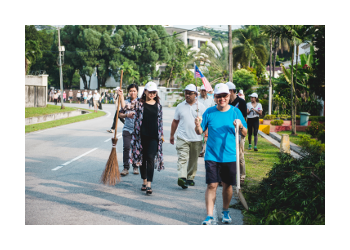
In fact, they remarked that no other neighbourhood (that they know of) to date has shown such strong support for a similar activity as the residents of The Hill showed. YB Hannah saw fit to donate RM5,000 (maximum allowed) to BTRA for other BTRA community activities.
The event started at 7:30 am at the Taman Tunku car park, with DBKL serving a pre-Gotong Royong snack. In his opening remarks, BTRA President Dato' Muthanna Abdullah emphasised BTRA's concern for and commitment to the environment, as well as a continued strong relationship with DBKL. YB Hannah acknowledged the strong showing of residents for this event, and attributed that to our genuine concern for the neighbourhood. She identified the number of derelict and abandoned properties as a key problem and said that her office would work with DBKL to act on this matter. Following YB Hannah's remarks, certificates of appreciation were presented to representatives of the public service agencies who tirelessly ensure that our streets and drains are maintained.
After the formalities, it was off to work! DBKL provided tools of the trade - shovels, wheelbarrows, paint and paint brushes, gloves, garbage bags, baskets. The Gotong Royong focused on Langgak Tunku and Dalaman Tunku; two groups, led by Committee Members Dato' JJ Choong and Mr BK Tan, walked these roads and met "at the top." Some participants opted to give the curbs along Langgak Tunku a fresh coat of paint.
What kind of trash did we pick up? Plastic bottles, bottle caps, plastic bags, cigarette packs, food wrappers, torn sheets of paper, car bumpers, shards of glass, a sheet of tarpaulin half-buried in the soil, and other non-organic unidentifiables.
At 10:00, everyone returned to Taman Tunku for a buffet provided by Frhen's Café and Warisan Tunku.
Over the years, many neighbourhoods formed their respective residents' associations with the aim of protecting their zones from indiscriminate development and preserving their quality of life. As such, engagement with local council representatives and DBKL was mostly focused on issues affecting their respective neighbourhoods.
But property development projects have continued relentlessly, green zones have vanished, and many neighbourhoods in the city seemed to be never-ending construction sites. It became increasingly clear that if KL aspired to be a world-class city, a comprehensive city plan was sorely needed.
To that end, a group of KL-based residents' associations and like-minded NGOs formed the Coalition to Save Kuala Lumpur in 2008, primarily to engage DBKL for the launch of the Draft Kuala Lumpur Local Plan 2020. The process to draft the KL Local Plan 2020 began in 2008. Four years later, and after spending a considerable sum, the Draft KL Local Plan 2020 was no closer to being gazetted.
Fast forward to 2017, the then Federal Territories Minister, Tengku Adnan Tengku Mansor, announced that the Draft KL Local Plan 2020 would not be gazetted in its present state as it was due to expire by 2020. He alluded to a new KL Local Plan 2035, and even a 2050 plan. This announcement spurred the group to reinvent itself as Selamatkan Kuala Lumpur, or SaveKL, which held its first meeting in January 2018. More than 30 KL-based residents' associations have joined SaveKL to date.
Formalised in January 2018, among the 30-odd residents' associations that have joined are BTRA, Bukit Damansara, Bukit Bandaraya, Bukit Persekutuan, Sri Hartamas, Taman Seputeh, and Taman Tun Dr Ismail. The Chairman is Tan Sri Abdul Aziz bin Abdul Rahman, who is the President of the Bukit Damansara House Owners' Association.
SaveKL wishes to see four outcomes for Kuala Lumpur:
- Gazetting and the enforcement of the KL Local Plan 2020
- Election of a KL Mayor and council members
- Effective community participation in the development and future of the city
- Protection of green and public spaces
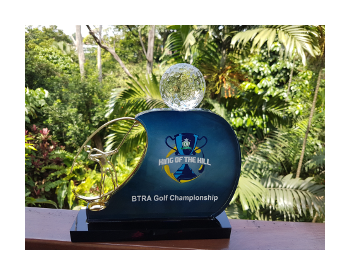
Against the golfing might of Dato' Muthanna Abdullah and Dato' Tan Hoe Pin - BTRA President and Deputy President, respectively - and beset by 3-putt yips, Taman Duta (represented by Dato' Abdul Aziz b. Mohd Akhir and Han K Hoh) lost the match.
Having started the ball rolling, a neighbourhood match was scheduled on 26th September 2017, when 16 residents from Bukit Tunku and Taman Duta assembled at Royal Selangor Golf Club to do golfing battle, Ryder Cup style, for neighbourhood bragging rights!
Team Bukit Tunku looked strong on paper with two single handicappers (one a past RSGC Captain) and the proven 1st pairing of the BTRA President and Deputy President. Team Taman Duta possessed strong team unity. Match format was best ball off, with one point to the winning pair - in true Ryder Cup style, teams only disclosed pairings to each other on the morning itself:
Match 1: Dato' Muthanna Abdullah and Dato' Tan Hoe Pin vs Tan Sri Yahya Awang and Han K Hoh
Team BT had a firm grip on this match, going 1-up at the very first hole. They never looked in trouble and cruised throughout - after Dato' Muthanna's birdie on the 14th hole to lead dormie 4, the writing was on the wall, and despite some token rear guard action from Team TD (winning the 15th and 16th hole) Team BT won 2-up with a par on the par-3 17th. Renowned cardiologist Tan Sri Yahya diagnosed Team BT as battling with all of their heart...
Match 2: Dato' Bobby Ong and Dato' Sia Teong Heng vs SH Yong and Alex Lim
A real ding-dong battle that saw Team TD going 4-up through the first eight holes, with Team BT fighting back to all square at the penultimate hole. Team TD came up big with both team members landing on the 17th green (one close to the hole) and when SH Yong sunk his long putt for birdie (nett Eagle), Team TD had the advantage. A nerveless putt from Alex Lim from four feet at the end secured the win for Taman Duta! Alex has lived in Bukit Tunku for over 20 years - he was co-opted by Team Taman Duta for the match and subsequently admitted he was "conflicted" over sinking his final putt...
Match 3: Tan Sri Vincent Lee and Dato' Ahmad Kadis vs Tunku Naquiyuddin and Datuk Ali Kadir
A convincing win for Team TD! Team BT were well and truly trounced, going down 6 and 5 against an inspired pairing (who live on the same road in Taman Duta). Exhibiting no mercy, Team TD stated their new objective of winning 10 holes against their opponents while steamrolling them! Faced with a barrage of good natured needling at the post-match lunch, Tan Sri Vincent Lee responded tongue-in-cheek: "I thought it was Club protocol to let Royalty win..?" Next time, Team Bukit Tunku aims to draft Tunku Naquiyuddin to their team!
Match 4: Dato' Teong Teck Lai and Roger Wong vs Dato' Abdul Aziz bin Mohd Akhir and William Ng
This match went right down to the last hole, which Team TD won, to eke out a valuable 1-up victory. Having watched many Ryder Cups, Team TD employed proven strategy and placed its strongest golfer by handicap, Dato Abdul Aziz, in the final pairing. The plan worked out and victory was in the bag after a tense match!
The Result: Team Taman Duta won 3-1!!!
The King Of The Hill Trophy now resides safely in Taman Duta, where it will remain until a rematch in late 2018... plans are currently underway for a broader golf event based on Stableford Points.
In 2017, two applications for building new high-density residential properties were halted. One concerned a piece of land along Jalan Tunku leading to Langgak Tunku, which is, in fact, secondary jungle. This long-running case was reported in local dailies in April 2017, with the owner of the land eventually having to sell at a loss.
The second piece of land is in Jalan Gallagher, for a high-rise condominium development. BTRA Honorary Secretary and Honorary Treasurer attended a meeting with DBKL to present its case against the project. Among the compelling reasons are:
- Density: the permitted density in this area is 10 persons per acre (changed to 12 ppa in the KL Local Plan 2020). Anything exceeding this number is not permitted.
- Land use and buildings: The land use is zoned for residential purposes and houses only. No condominiums or commercial buildings are to be built in Bukit Tunku and Taman Duta.
- Number of detached houses per acre: Based on density of 12 ppa, only two detached houses are allowed per acre.
- Building height: Each house is only allowed to be built up to three storeys above road level and one storey below road level.
- Slope gradient: Each building has to comply with the guidelines of slope gradient, a critical factor for building in Bukit Tunku and Taman Duta. There have been numerous cases of soil erosion, sink holes and flooding in this area, the recent serious incident of the slope eroding on to Lebuhraya Mahameru is a case in point.
- Utilities: Increased number of residents will stretch facilities and infrastructure to capacity. Drains are too small, causing severe flooding in lower Bukit Tunku due to poorly managed developments in nearby areas; water pipes are some of the oldest in Kuala Lumpur and need replacing.
- Road use and traffic problems: Bukit Tunku and parts of Taman Duta were developed some 60 to 70 years ago. The roads are considered "country roads". The narrow two-lane roads cannot be widened, and any increase in the number of vehicles would create further traffic congestion and obstruction.
- Environmental issues: The greenery within and surrounding Bukit Tunku and Taman Duta is among the last surviving green lungs in the city. The huge size of the proposed development will significantly erode DBKL's plans to keep the area around Lake Gardens a green area.
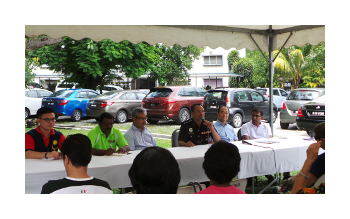
Representing Sentul District Police were ASP Asaha Mamat and a few officers. Dato' Peter Pereira, General Manager of Magnus Force, provider of the BTRA Security Scheme, also attended. BTRA President Dato' Muthanna Abdullah shared the status of general security in our neighbourhoods. A lively discussion followed.
ASP Asaha explained that the Sentul District Police has 78 officers to oversee public security of a large territory, covering Sentul, Bukit Tunku, Taman Duta, and certain sections of Sri Hartamas. According to statistics, the most popular time for home intrusions is around 2.00 am. Police analysis of these incidents suggest that they are mostly opportunistic, rather than the work of organised syndicates.
Key points and recommended actions:
- If there is a security breach (e.g. home intrusion, vandalism, suspicious or unauthorised activity on premises), call the Sentul District Police to report. A patrol team will be dispatched to the location within 15 minutes.
- If a resident should encounter or surprise an intruder(s) at home, the first course of action is to ensure his or her own safety and that of others in the household. If possible, try to leave the house, or lock yourselves in a room. Call the police as soon as possible. Subscribers to BTRA Security Scheme who have downloaded the BTRA mobile app can send an alert through the app. The BTRA Security Patrol will go to your house (the address used in your app registration).
- In the event of aggression on the part of the intruder(s), self-defence using firearms or other "weapon" (e.g. stick, umbrella, decorative ornament) is acceptable and will be considered under the law.
- A video mobile app is available for instant and immediate connection to Sentul District Police. Download VPS PDRM to your smartphone to take photos and send reports directly to the police.
- The main difference between private security guards and police officers is that security guards are not authorised to carry firearms.
- Application for police boxes at household gates does not necessarily mean you will be given one. The BTRA Security Patrol serves the same purpose, and more regularly than the police patrol because the BTRA Security Patrol is a dedicated service to our neighbourhoods.
In summary, residents should:
- Stay vigilant at all times, especially if and when driving home alone at night.
- Report any suspicious activity to either Sentul District Police.
- Subscribe to the BTRA Security Scheme for an additional layer of protection and access to the security features on the BTRA Mobile App.
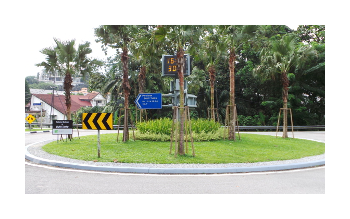
Most, if not all, who live in Bukit Tunku or Taman Duta use this roundabout several times a day. It sees a lot of traffic from people using this route as a short-cut to Jalan Duta, Jalan Kuching, Segambut, Jalan Tun Razak and into KL centre. The plot looked rather sorry - brown patches on the grass and trees looking rather dried out. Plus a digital clock that was on the blink more often than not.
After several weeks of digging and replanting, what a difference a makeover can achieve. There is also a very nice sign board welcoming people to Bukit Tunku, thanks to BTRA Committee member Brahmal Vasudevan.
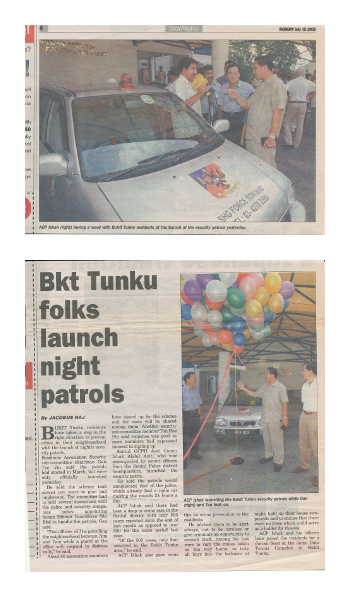
At the outset, there was only one patrol car then, where today there are two patrol cars and one motorcycle. Over the years, the density of our neighbourhoods has increased. New houses and condominium developments mean more people living in our neighbourhood. Some residents have engaged their own private security. And there are at least two gated communities within Bukit Tunku. That said, an extra layer of security can be an advantage.
Visibility of the BTRA Security patrol team serves as a deterrent to home intrusions. Members are encouraged to subscribe to this "crime watch" service, a worthwhile investment in neighbourhood and personal security.
Click here to read the benefits of subscription to BTRA Security Scheme
Associations are in a prime position to contribute to neighbourhood security, cleanliness and, particularly, in improving the environment. Realising this value, DBKL invited various residents' associations to provide views for the KL Plan in 2011. Unfortunately, that plan was never implemented.
However, DBKL has continued to support residents' associations based in Kuala Lumpur, which has evolved beyond public service to financial support. In May 2015, DBKL hosted its first dinner for several residents' associations at which "promissory notes" of RM9,000 were presented to each association.
On Tuesday 12th April 2016, DBKL hosted another dinner at the Dewan Perdana. The Guest-of-Honour for the evening was the Minister for Federal Territories, YB Datuk Seri Utama Tengku Adnan Bin Tengku Mansor, who spoke about the important work that residents' associations are doing for the improvement of Kuala Lumpur.
In recognition of the valuable contribution by the associations, DBKL once again demonstrated its commitment through financial support. Each residents' association received RM10,000, an increase from RM9,000 in 2015.
Representing the Bukit Tunku Residents' Association at the 12th April dinner were the Honorary Treasurer Mohammad Abdullah and Honorary Secretary John Smurthwaite.
BTRA uses the money to support its magazine, Living on the Hill, and a part time administrative secretary.
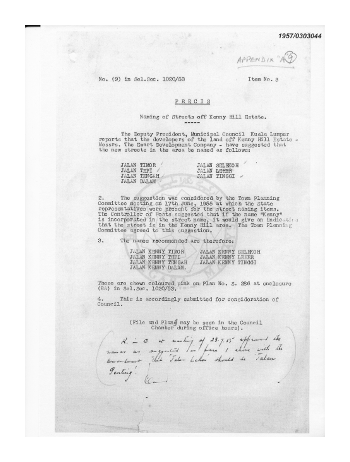
Street names in Kuala Lumpur used to come under the jurisdiction of Dewan Bandaraya Kuala Lumpur until the Ministry of Federal Territories took over the responsibility in 2009. DBKL's current role is to process applications, assist the Ministry, and recommend suitable names and locations to the Street Naming Committee, which was formed in the early 1900s. This Committee is now known as Jawantankuasa Kebangsaan Nama Geografi (National Geographical Name Committee). Established in 2002, its role is to coordinate the correct geographical terms for places and road names. Members comprise governmental and non-governmental bodies, including MAMPU, Pos Malaysia, Malaysian History Association and Dewan Pustaka dan Bahasa.
In 1953, a decision was made to avoid mixing languages in street names, meaning that street names had to be completely in English or in Malay. By 1960, the policy for all street names to be in the national language came into play, and most street names in Kuala Lumpur were translated into Malay. The Urban Terminology Committee, with approval from Dewan Pustaka dan Bahasa, changed the English words for "road", "street" and "lane" to "jalan", "lebuh" and "lorong" respectively.
The street names in Bukit Tunku, formerly known as Kenny Hills Estate, track the changing cultural, political, traditional and social landscape of this residential area. The "nationalisation" of street names is evident in almost all the neighbourhood's street names.
Most of the streets were renamed for Tunku Abdul Rahman Putra Al-Haj, the first Prime Minister of the newly independent Malaysia, whose private residence is located at 1, Jalan Tunku. Given the hilly terrain, the prefixes of many street names reflect its topological make-up: cerunan (slope); dataran (plains); lembah (valley); selekoh (bend); simpangan (fork); tepian (bank); and tinggian (heights). Hence, there is Cerunan Tunku, Selekoh Tunku, Tinggian Tunku and so on.
Kenny Hills is steeped in colonial history. The original Kenny Road (subsequently renamed Jalan Kenny), which is now Jalan Tunku, was named to commemorate William Eyre Kenny (1867-1924), the Director of FMS* Public Works. According to records, Kenny was an engineer in the New Zealand Public Works Department and New Zealand Artillery in 1883. He left for Sarawak when he was 23 to join the Survey and Public Works Department under Rajah Brooke, and relocated to the Straits Settlements as Assistant Superintendent of Public Works in 1895.
In 1903, Kenny was transferred to Selangor as Acting Engineer and subsequently Executive Engineer. He was appointed Senior Warden of Mines in 1910 and Director of FMS Public Works from 1920 to 1930.
Records show that in 1949, Messrs. Ewart Land Development Company, an Anglo-Thai corporation, submitted proposals to develop a portion of the Batu Estate flanking Kenny Road. This scheme called for the sub-division of lots and removal of old rubber trees to make way for a residential estate, with plots of about one acre each. This scheme for about 150 houses came to be known as Kenny Hills Estate, and internal roads would have the name "Kenny" in them.
Notes and Acknowledgements
*FMS: Federated Malay States (Perak, Selangor, Pahang, Negri Sembilan)
Sources:
- Various documents from Arkib Negara Malaysia (National Archives of Malaysia)
- Kuala Lumpur Street Names: A Guide To Their Meanings & Histories by Mariana Isa and Maganjeet Kaur, published by Marshall Cavendish International (Asia) Pte Ltd, 2015
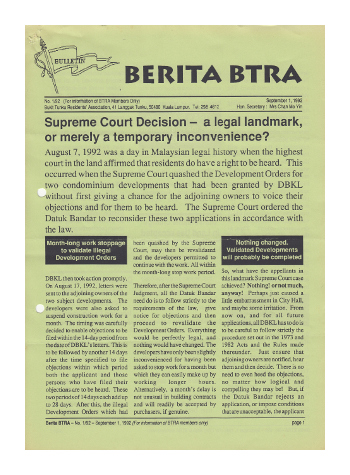
It was back in 1991 that a few long-term and concerned residents of Bukit Tunku and Taman Duta came together in an organised manner to dispute the way in which two high-rise condominium developments were approved by DBKL to start building in Bukit Tunku.
The predecessor to what is now BTRA and informally known as "Friends of Bukit Tunku and Taman Duta", the group was disputing the "quiet" approval of two development permits by the then Datuk Bandar, without first giving a chance to direct adjoining owners of the property under development to voice their objections and for them to be heard, as required under the law.
The action, spearheaded by, among others, the late Dato' Kington Loo, the late Tunku Mansur Yaacob, Mrs Chan Mo Yin, Mrs Daisy Hoh and Mr John Smurthwaite, resulted in a legal landmark in Malaysia. On 7 August 1992, the highest court in the land affirmed that residents DO have a right to be heard. The Supreme Court quashed the development orders for the two condominium developments, quite an achievement for that time.
It was in this period of organised action that the Bukit Tunku Residents' Association was formalised and registered, in May 1992.
Membership was originally open to Bukit Tunku residents only, as this area was increasingly being targeted for high-rise condominium developments. The first BTRA newsletter - Berita BTRA - was published and distributed in September 1992. The content focused on the landmark decision. Written by Dato' Kington Loo, one of Malaysia's pre-eminent architects and indeed an architect of sorts of Bukit Tunku itself, emphasised that although a favourable judgement was given, engagement with the authorities should be ongoing. With his expertise and insight on land and property development, Dato' Kington Loo proposed that a masterplan for Bukit Tunku be included in the KL Masterplan and discussed with DBKL to avoid indiscriminate, and achieve responsible, development.
Subsequent to this early action, BTRA was actively involved in engaging the authorities on a number of property developments in their early days, among them the development now known as Tijani. The modest Berita BTRA, which went through a few iterations in layout, evolved into BTRA Bulletin in 2005/2006, and subsequently into a magazine format, 'Living On The Hill'.
Today, in addition to the main committee, BTRA has sub-committees overseeing various aspects to ensure our quality of life and living is protected and preserved - environment and maintenance, security, planning and development. The dedicated committee and sub-committee members contribute their time and expertise on a voluntary basis, based on their genuine care and concern for the welfare of our community, and desire to build a sustainable environment for healthy living in Bukit Tunku.
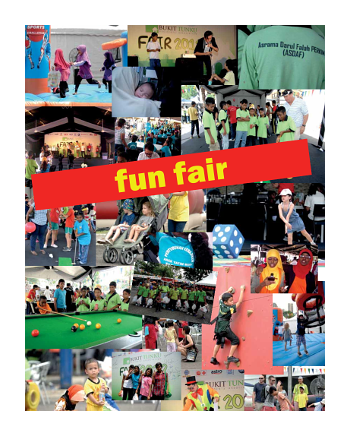
As such things go, organising a major event requires sleeves-up work and commitment. An Organising Committee, led by Committee Member Jaspreet Kaur Gill, was formed to bring the fair to life.
Anyone who's ever had to organise an event knows what it takes to have a successful outcome, especially when there is a fund-raising goal: volunteers, corporate sponsors, food providers, publicity; commitment, teamwork, can-do attitude, collaboration, cooperation and a common goal, to bring all elements together.
Jaspreet and her Organising Committee managed to do all this, and more. Once the call went out to residents for support, many rose to the occasion and even brought in their respective corporations to support the BTRA Fair.
Specialist food providers were secured. Corporate sponsors were confirmed. Venue, set-up and Fair activities were finalised. The day arrived.
A pre-opening activity - The Amazing Bike Challenge - was flagged off at 07:30 hours. Deputy President Dato' Tan Hoe Pin was up bright and early to do the honours. Many teams of two were ready and raring to go o'er hill and dale to challenge each other for the very attractive prize - a pair of iPads!
At 09:30 hours, Tun Musa Hitam, a long-time resident of Bukit Tunku, launched the BTRA Fun Fair - and it was all systems go!
Support from corporations was key, and highly appreciated. Astro radio anchors broadcast the Fair from eight of its stations in the week leading up to it. Maxis sent SMSes to some 200,000 customers on the eve of the Fair. Baskin Robbins, Coca-Cola, KFC and Ayamas, and Milo provided food and donated all proceeds to BTRA for charity. Special thanks also to Berjaya, CIMB Bank, Gamuda, Sime Darby and UEM Land for their support.
A great time was had by all, including 500 disadvantaged children who received coupons to spend on food, games and shopping throughout the day.
BTRA Fair 2012 By The Numbers:
- RM78,000 in total was donated to 11 charitable organisations.
- RM45,000 worth of coupons were sold at the Fair.
- At least 3,000 people visited the Fair.
- 500 disadvantaged children joined the day's festivities, each receiving coupons to eat, play games and shop.
- 33 booths were rented by residents to sell a diversity of products, from lemonade to art work.
- 20 hawker food stalls ran out of food!
- Two BBQ food providers sold out their Wagyu steaks at RM50 each.
- 32 dozen oysters, 10 kg of trout, and 5 kg of mussels were consumed.
- Two hours was all it took for Milo to run out of everyone's favourite drink.
- Eight Astro radio stations publicised the Fair over the week.
- Some 200,000 Maxis customers received SMSes about the Fair on the eve.
|